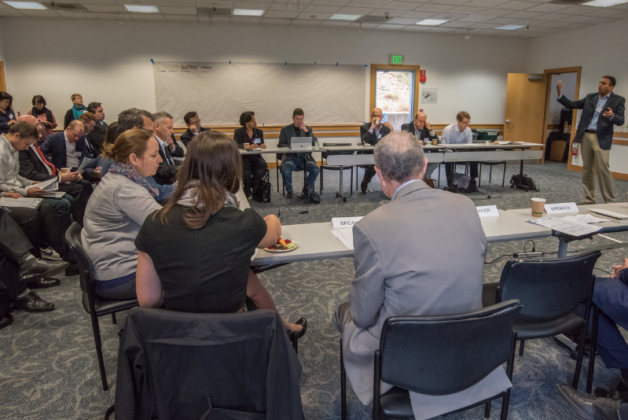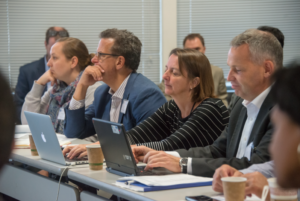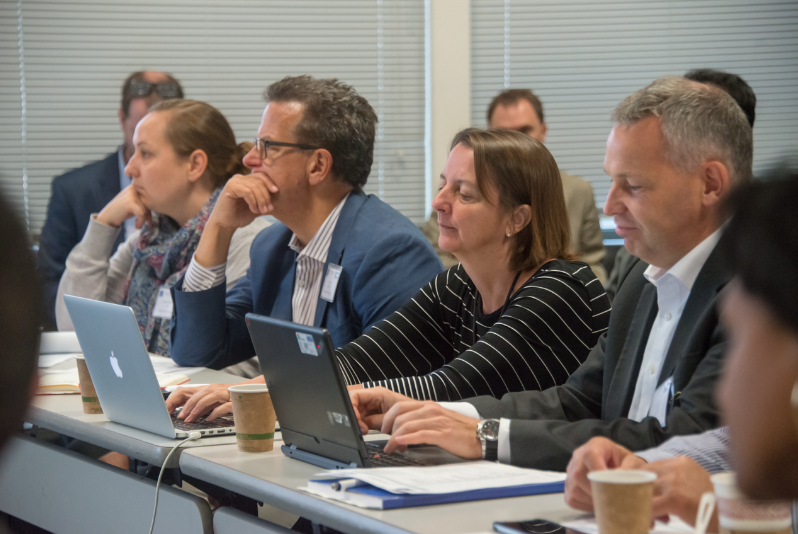More than 50 people attended a battery research workshop last Thursday sponsored by the University of California and held at Berkeley Lab. Its purpose was to explore what role researchers in the UC system can play in bridging the gap between science research and technology deployment of new batteries.
The invited participants included key players in industry, such as battery manufacturers, automobile companies, utilities, solar companies moving to storage, and systems integrators, as well as thought leaders from academia and national labs.

Berkeley Lab scientist Venkat Srinivasan (right) addresses invited participants at the UC Battery Research Workshop (Credit: Marilyn Chung/Berkeley Lab)
A new battery technology can take decades to develop, Lab battery scientist Venkat Srinivasan, who is also deputy director of the Department of Energy’s Joint Center for Energy Storage Research (JCESR), said in his introductory presentation. One key problem is a gap in the technology-readiness-level (TRL) spectrum between the basic and applied science end of the spectrum and the technology maturation end of the spectrum, he said.
“The gap is in the applied research,” he said. “The purpose of this workshop is to see what role UC can play. There is expertise in the UC system across the spectrum.”
The workshop addressed the need for energy storage for both transportation and the grid.
 The keynote speaker was California Energy Commissioner David Hochschild. Other speakers included Susan Kennedy, former chief of staff of Gov. Arnold Schwarzenegger and now CEO of Advanced Microgrid Solutions, and Mark Verbrugge of GM and the U.S. Advanced Battery Consortium (USABC).
The keynote speaker was California Energy Commissioner David Hochschild. Other speakers included Susan Kennedy, former chief of staff of Gov. Arnold Schwarzenegger and now CEO of Advanced Microgrid Solutions, and Mark Verbrugge of GM and the U.S. Advanced Battery Consortium (USABC).
In the afternoon, attendees broke out into smaller groups for more intensive discussions. In the next few weeks, a set of recommendations and a roadmap for next steps will be distributed.
“This is the beginning of the conversation,” Srinivasan said. “We plan to build on this meeting and organize smaller working groups focused on specific topics such as understanding the broader trends on the grid and the roadmap of where storage technologies need to be in the next five, 10, and 20 years.”
